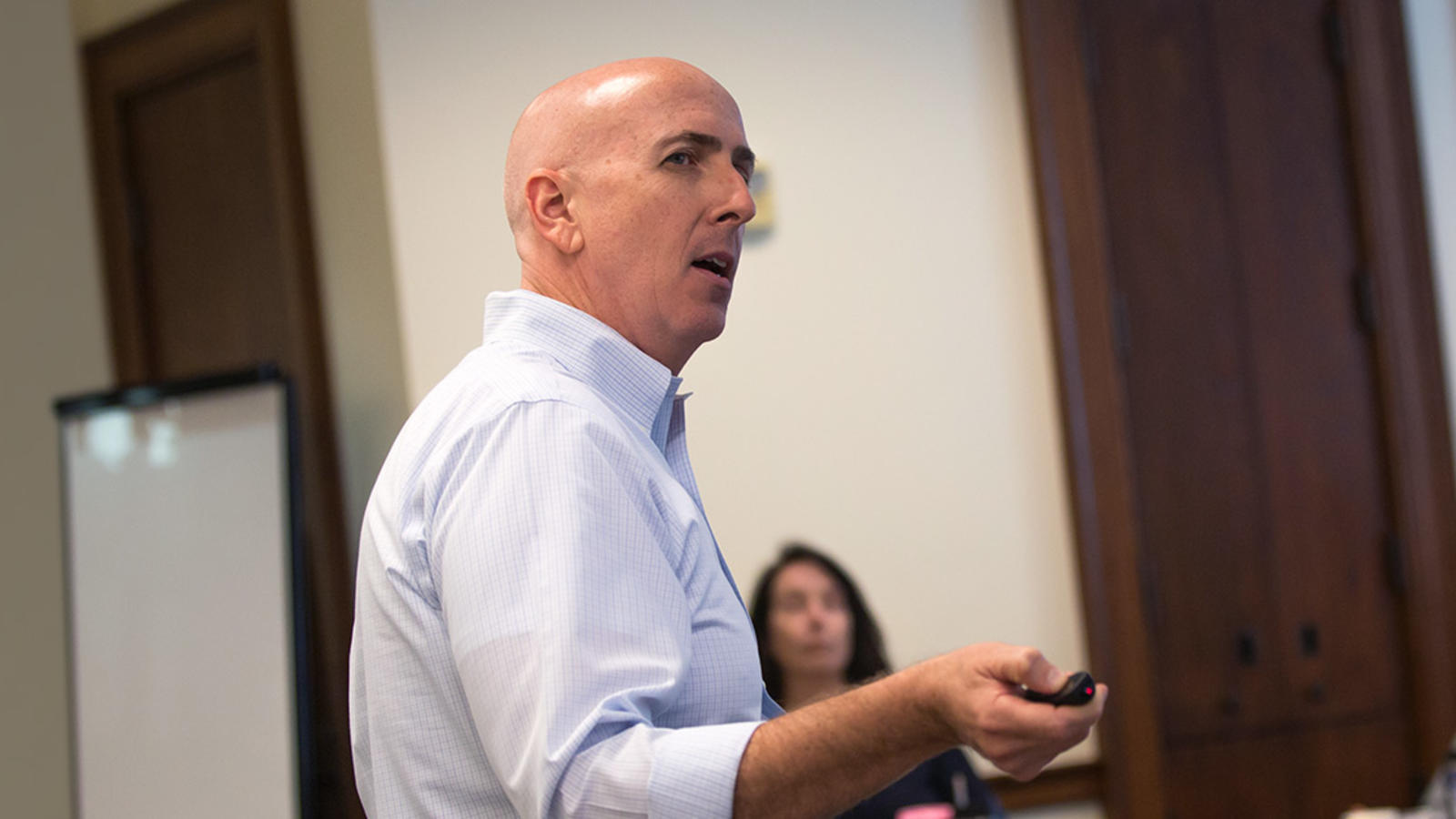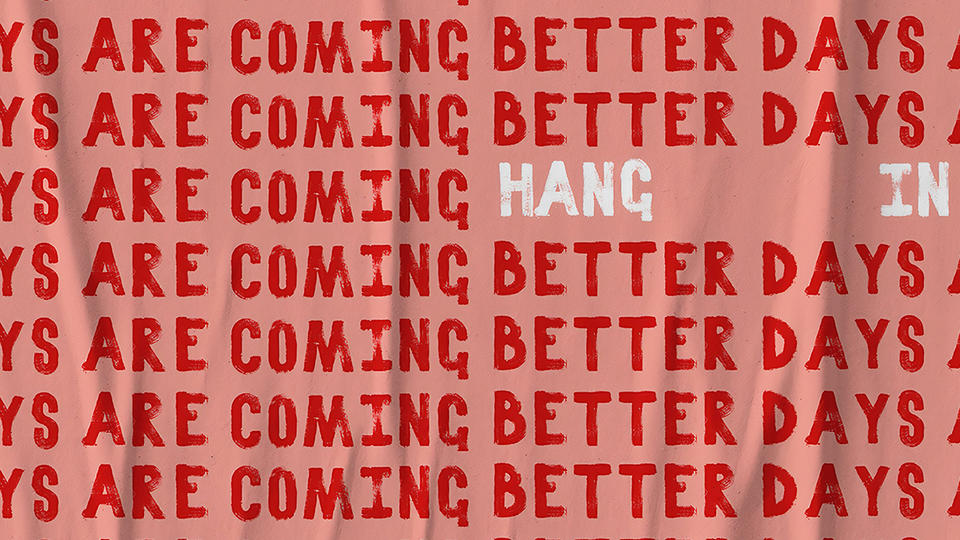Associate Professor of Strategic Management
Meet 5 members of the Houston Business Journal Leadership Trust
Pradeep Anand has been helping businesses improve their revenue and margin growth for over 35 years. He is president of Seeta Resources, a marketing and business strategy/execution consulting firm that serves the oil and gas, technology and engineering industries.He has been an adjunct faculty member at Rice University’s Jones Graduate School of Business’ MBA program.
Houston biotech company closes $120M Series B, Chevron taps local startup for program and more innovation news
Rice University's Jones Graduate School of Business — in partnership with The Woodlands Area Economic Development Partnership — has created The Leadership Accelerator. It's the first time Rice has brought an open enrollment program to the area.
This is how to have more epiphanies
While epiphanies are powerful, they can also feel rare, but it’s possible to take steps to invite more of them into your life, says Erik Dane, distinguished associate professor of management at the Jones Graduate School of Business at Rice University.
Civil Bank signs pact
Civil Bank has signed an agreement with Leadership Academy Nepal with an aim to enhance the leadership skills of its staffers, as per a media release. Affiliated with Rice University Business School, Leadership Academy Nepal is a private initiative that aspires to play a role in addressing human resource challenges in Nepal and the South Asia region.
Rice business school brings leadership seminar to The Woodlands
Local business professionals and aspiring corporate leaders seeking that extra nugget of management know-how will not have to go far to learn new tactics and strategies, as Rice University is bringing a four-day, intensive leadership program to The Woodlands this fall.
Rice’s Jones Graduate School of Business to launch executive education program in The Woodlands
Responding to demand for its executive education programs for professionals in business and leadership roles, Rice University’s Jones Graduate School of Business, one of the country’s top-ranked business schools, will launch its first open enrollment off-campus program in The Woodlands this fall.

May 30 preview event will explore ‘The DNA of Leadership’
Responding to demand for its executive education programs for professionals in business and leadership roles, Rice University’s Jones Graduate School of Business, one of the country’s top-ranked business schools, will launch its first open enrollment off-campus program in The Woodlands this fall.
Rice Business is partnering with The Woodlands Area Economic Development Partnership to bring the Oct. 7-10 program — The Leadership Accelerator — to the former Chicago Bridge & Iron Co. office buildings in Hughes Landing, 2103 Research Forest Drive.
Program organizers and community leaders will gather at The Woodlands Country Club from 4:30 to 6:30 p.m. May 30 for a special presentation on “The DNA of Leadership.” The event will feature remarks from Brent Smith, senior associate dean for executive education and associate professor of management and psychology at Rice Business; Gil Staley, CEO of The Woodlands Area Economic Development Partnership; and Peter Rodriguez, dean of Rice Business and professor of strategic management.
The Leadership Accelerator: The Woodlands is an immersive four-day course designed to give established managers an opportunity to study the best practices for creating a more cohesive, productive organization. Smith will use case studies, exercises, simulations and extensive discussion to guide managers through the state of the science of leadership. Participants will receive a certificate. View the video at https://youtu.be/SEGmkXEGEy0.
Media interested in covering the May 30 event should RSVP to Jeff Falk, associate director of national media relations at Rice, at jfalk@rice.edu or 713-348-6775.
For more information about Rice Business degree programs and executive education, go to https://business.rice.edu.
For more insights from and information about Rice Business faculty research, visit the school’s Rice Business Wisdom online ideas magazine at https://business.rice.edu/wisdom.
Related materials:
Follow Rice Business via Twitter @Rice_Biz.
Follow Rice Business Wisdom via Twitter @RiceBizWisdom.
Follow Rice News and Media Relations via Twitter @RiceUNews.
America's most affordable business schools
But the fact is, you have to go well down the ranking to get into the realm of anyone’s idea of “affordable.” Only three schools ranked by P&Q in the top 25 find their way into the “bottom” 20 for cost: No. 24 Rice University Jones Graduate School of Business is eighth overall at $116,530; No. 25 Indiana University Kelley School of Business is 16th overall at $137,910; and No. 18 Texas-Austin McCombs School of Business is 20th, at $146,908.
FreightWaves SONAR now features rail data from Commtrex
In December 2018, Commtrex was recognized as “Most Promising Company” at the 2018 Texas Digital Summit, hosted by the Rice Alliance for Technology and Entrepreneurship and Station Houston at Rice University’s Jones Graduate School of Business.
Winning Isn’t Everything
Research on the early automobile industry shows that firms gained legitimacy not just by winning contests, but by showing up.


Based on research by Anastasiya Zavyalova, Brent Goldfarb (University of Maryland) and Sandeep Pillai (Tulane University)
Key findings:
- A 1994 study examined whether participating in certification contests affected the survival of automobile companies during the industry’s inception.
- Recently, researchers replicated the study and found that cumulative contest victories had a legitimizing effect on automobile firms, leading to increased chances of firm survival.
- Even when firms didn’t win, simply participating in contests had a positive impact on firm survival.
Fear of the unknown is an issue for anyone peddling new technology — and at the turn of the 20th century, the automobile industry was struggling to assuage consumer concerns. The “horseless carriage” represented a complete departure from the past, and people then were as wary of it as many of us today are of driverless cars. Then and now, firms have had to prove that a new technology is safe and reliable before they can hope to make a sale.
The future of the automobile was uncertain until 1906, when sales began to take off. Before that, the industry’s survival depended, in part, on its ability to demonstrate the technology was reliable. One way automakers did so was to hold organized races — think NASCAR meets pre-Model T’s — where spectators could see the safety and efficiency of these state-of-the-art machines. Popular magazines of the day reported the results.
In 1994, Hayagreeva Rao, a Stanford University professor of organizational behavior, studied the impact these contests had on the survival of different auto companies. He found that companies whose cars won the races had a higher likelihood of survival overall, thanks to the resulting reputation boost. Rao’s research is frequently cited as a defining study of the relationship between social approval and actual firm performance.
Given the study’s ongoing popularity and influence, Rice Business management professor Anastasiya Zavyalova and her co-authors replicated it using the same sources as the 1994 study. They also included additional contemporary sources, studying a total of 1,176 car manufacturers over the years 1895-1912.
Rao’s original study hypothesized that cumulative contest victories contributed to an increasingly better reputation, and could serve as a predictor of automobile firm survival. This hypothesis held true both in his study and the replication. However, Zavyalova and her team discovered something more — that it wasn’t just victories in the races that predicted firm survival. In fact, firms that placed second or third, or even farther behind, were more likely to survive than firms that didn’t enter the contests at all.
This finding supports the concept of “loose coupling,” in which firms that simply participate in a race are viewed more favorably by the public, leading to better business outcomes.
Another contribution of the second study was to control for the variables related to the quality of the firms in the dataset. After all, one could argue that the more successful firms produced better automobiles, leading to increased chances of race victories and firm survival alike. To address this, the researchers used several proxies for firm quality to level the playing field. Even with these controls in place, however, the hypothesis held.
Rao’s original study also included a second hypothesis: that companies facing greater uncertainty, such as start-ups, should benefit the most from contest victories. However, neither study’s outcome supported this hypothesis. While start-ups and more established manufacturers both benefited from competing in races, there was no difference in firm survival between the two groups.
So it looks like participating in contests is a fairly clear path to success. But is that always the case?
Zavyalova and her team point out that there’s still room for further research — for example, examining whether contest participation has the same positive effect on firms that make products such as luxury goods or art, where the criteria for “good quality” are far more subjective.
And despite the clear connection between contest participation and firm survival among automobile manufacturers, neither study controlled for two other variables that may have driven both participation and survival: the quality of the cars being raced and the effectiveness of the managers running the firms.
As modern-day organizations think about whether to enter similar contests, however, these findings suggest that they’re better off at least throwing a hat in the ring. The replication study shows that, win or lose, just showing up at a race counts as a victory.
Goldfarb, Zavyalova and Pillai. “Did victories in certification contests affect the survival of organizations in the American automobile industry during 1895–1912? A replication study.” Strategic Management Journal 39.8 (2018): 2335-2361. https://doi.org/10.1002/smj.2911
Associate Professor of Strategic Management
Never Miss A Story
You May Also Like
Keep Exploring
The Da Vinci Routine
How companies can foster employee creativity in routines.


Based on research by Scott Sonenshein
How Companies Can Foster Creativity In Routines
- Scholars have long regarded creativity and routines as opposites.
- New research shows that the relationship between creativity and routines is more complementary than previously imagined.
- Employers who encourage workers to put a piece of themselves into routine tasks can yield creative results.
Think of a routine: your morning workout, walking the dog, making your bed. It’s hard to imagine these as creative pursuits. After all, Leonardo da Vinci may have made his bed every morning, but it’s probably not what inspired him to paint the Mona Lisa.
So it’s no surprise that workplace analysts have long considered routines to be the antithesis of creativity. But it turns out that the relationship between the two is more complementary than previously believed. Scott Sonenshein, a management professor at Rice Business, studied just how this relationship works. What Sonenshein wanted to know was, how can an organization achieve creative outcomes through routine?
For the answer, think of da Vinci again. Certain repetitive aspects of style make his work recognizably his. It’s how we can instantly see that The Last Supper, St. John the Baptist and the Mona Lisa are all the work of his hand. In that sense, they are both repeated patterns and feats of genius.
For Sonenshein, some retailers are, in a sense, the da Vincis of suburban America. Sonenshein examined data from a fast-growing retailer that operates a chain of roughly 400 clothing, jewelry, accessory and gift stores across the U.S., and was fascinated to see how it could surprise its customers each season while maintaining a brand image that makes the retailer easily identifiable. Sonenshein realized that the retailer was effectively routinizing creativity.
When he interviewed corporate managers and store employees at the retailer he calls “BoutiqueCo,” a pattern emerged. Sonenshein discovered something he calls “familiar novelty” in the way the retailer designs its stores. While most stores use a rigid floor plan for the display of merchandise, BoutiqueCo instead adopts a set of flexible guidelines.
These rules of the road are explicit enough to ensure that each store is readily identifiable as a BoutiqueCo outlet. But because the display rules afford a great deal of flexibility, they allow space for creative employees to come up with their own ideas. If merchandising were a musical score, Sonenshein observed a dynamic that is less like marching band music and more like jazz. Employees are encouraged to riff off of the main themes of the chain to regularly create something unexpected.
Of course, creating novel effects doesn’t come naturally to everyone. It takes a certain kind of individual to achieve it, especially in the highly visual area of merchandising. Store managers told Sonenshein that they actively look for employees who are willing to take visual risks and engage creatively while still keeping to the rules of the company road.
Finally, creativity is routinized in the stores’ feedback systems. This takes place both among employees, who frequently discuss and even debate their work with each other, and in the more formal setting of managerial feedback. Managers actively encourage creativity, urging employees to put their personalities into the work of the store, to the point where brand identity and individual identity intermingle.
So what does the experience of one outlet tell us about the relationship between creativity and routines? Sonenshein suggests that there is a strong role for personalization of routine tasks in the creative workplace. When employees bring their own preferences to routine performances, it can elevate them from mundane to novel.
Of course, it’s unlikely that a window dresser will create the next Mona Lisa while promoting the spring line. Genius like da Vinci’s may only come along once in a millennium. But if we put a little soul into our work under the guidance of managers who allow us to riff off of the corporate sheet music, remarkable things become possible.
Scott Sonenshein is the Henry Gardiner Symonds Professor of Management at Jones Graduate School of Business at Rice University.
To learn more, please see: Sonenshein, S. (2016). Routines and creativity: From dualism to duality. Organization Science, 27(3), 739–758.
Never Miss A Story





